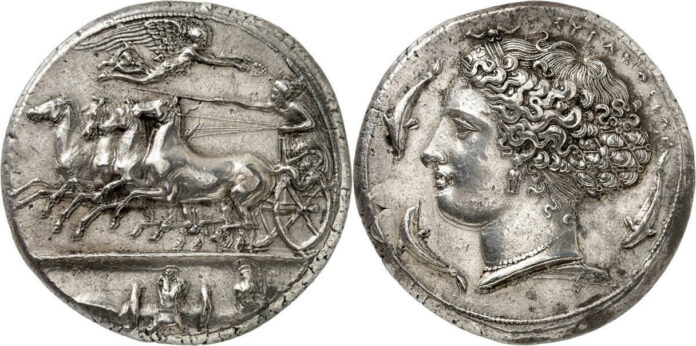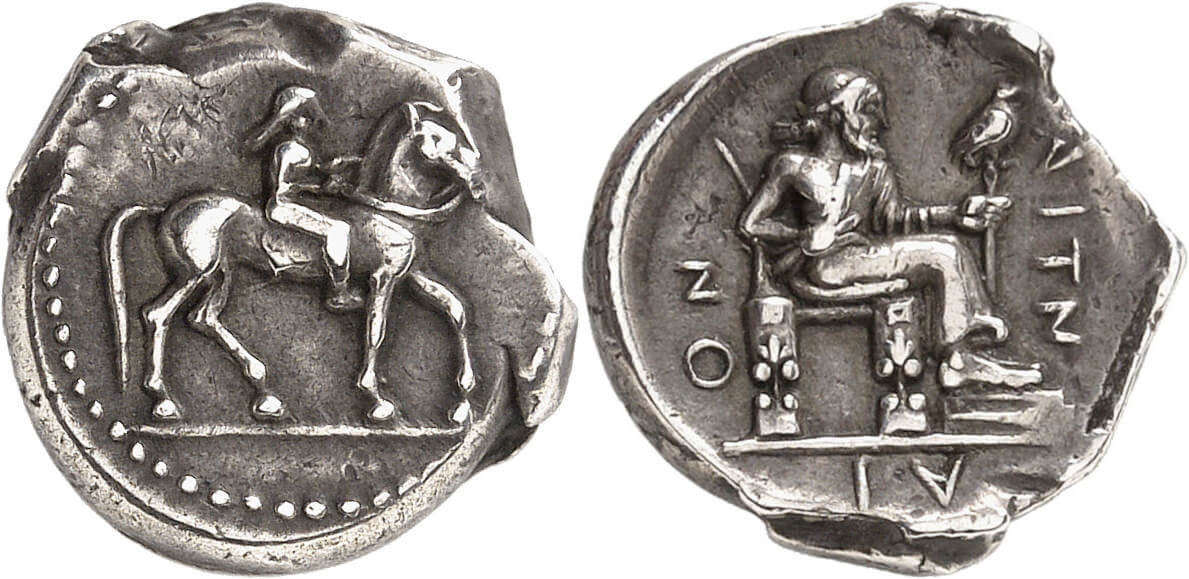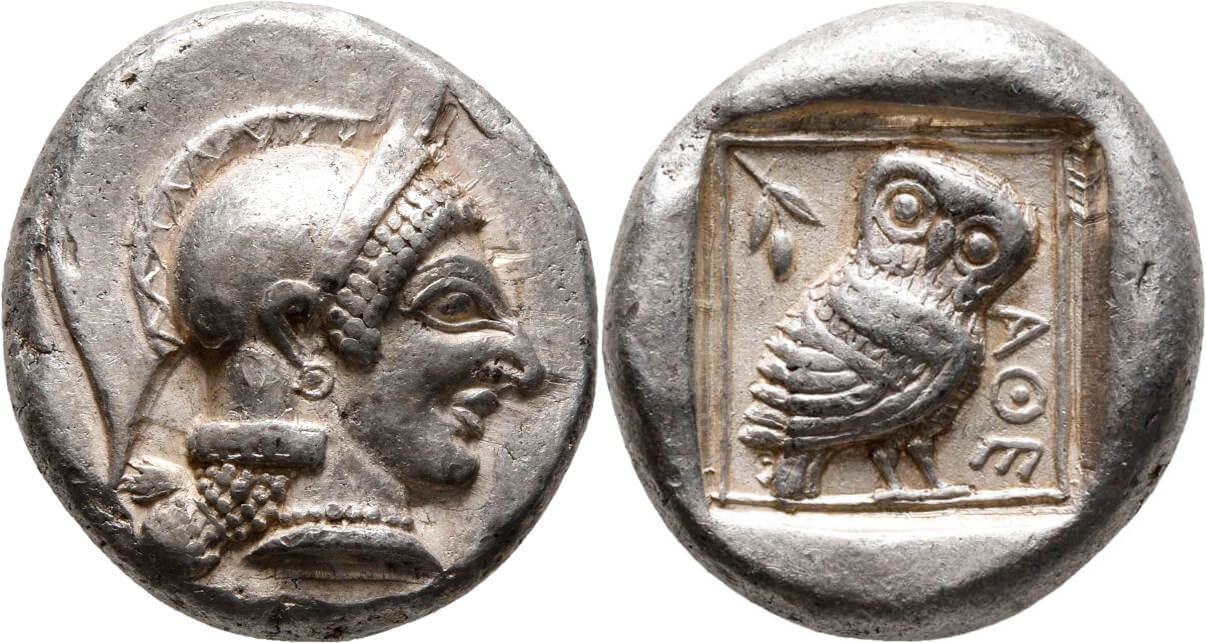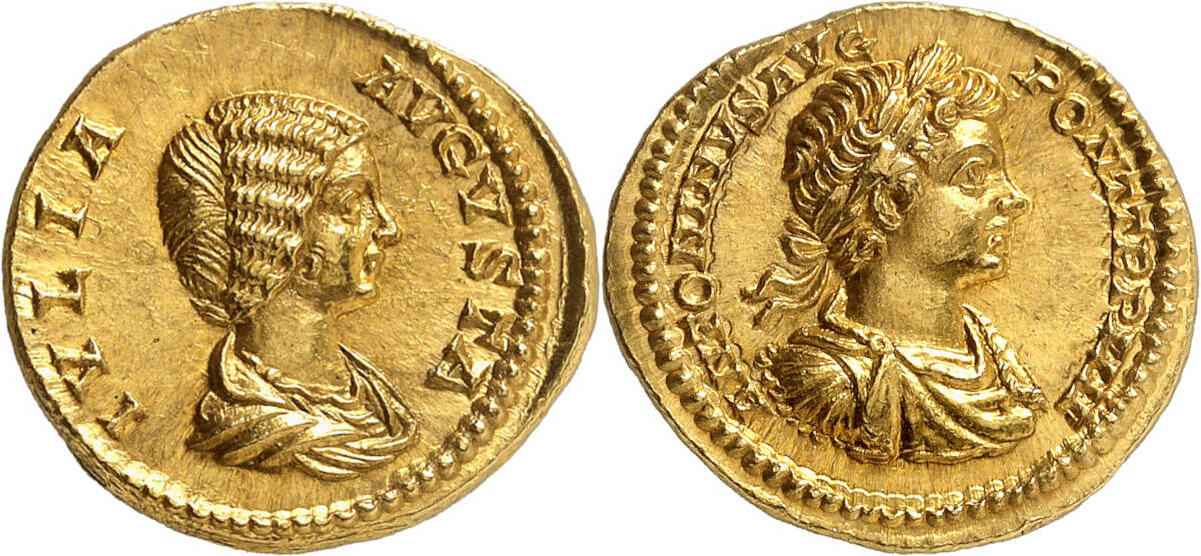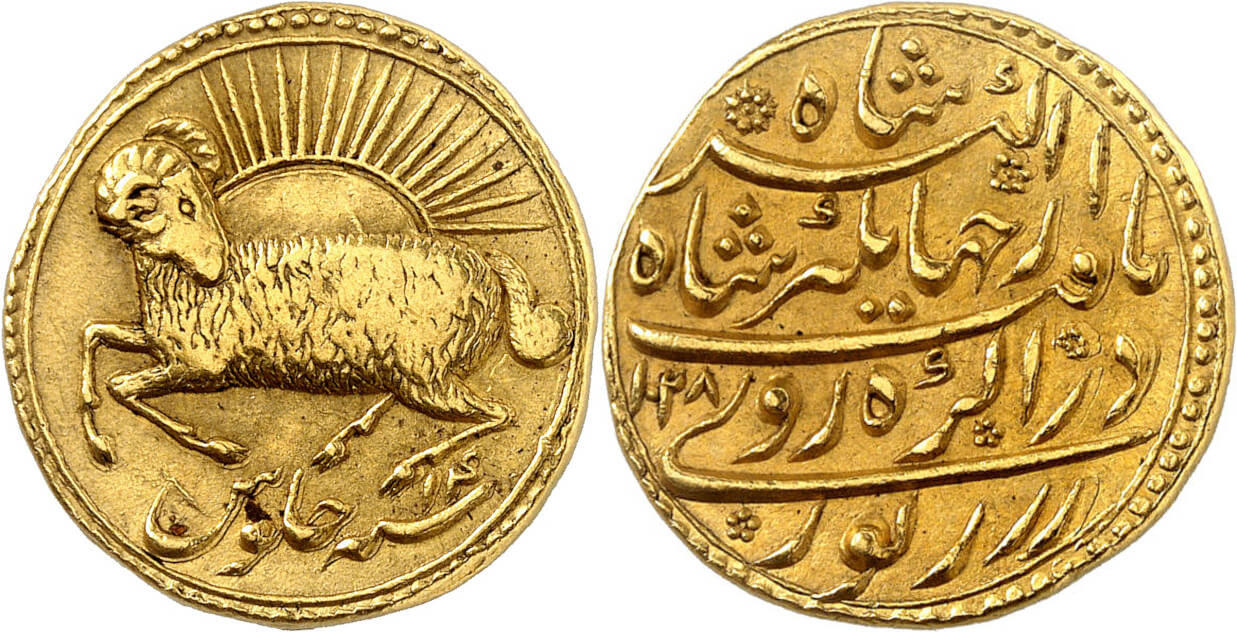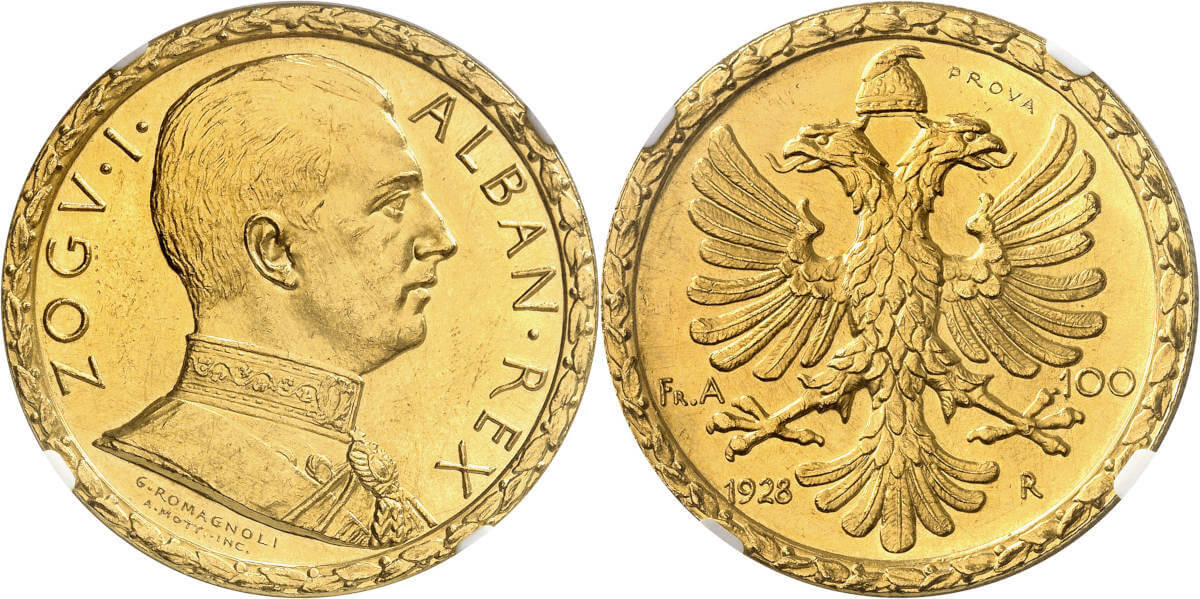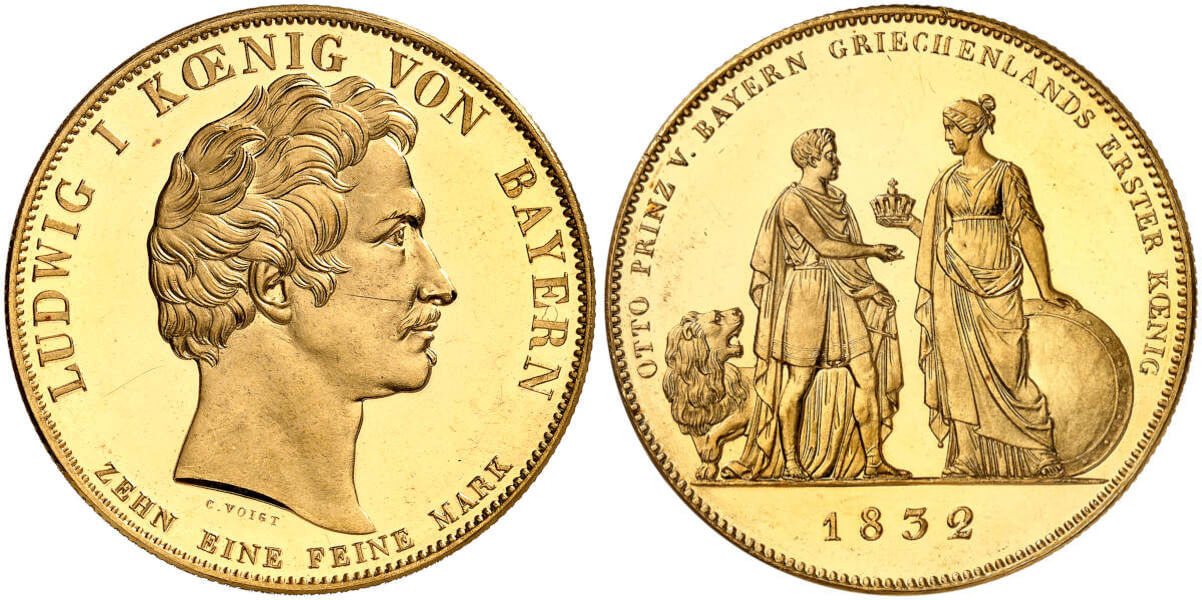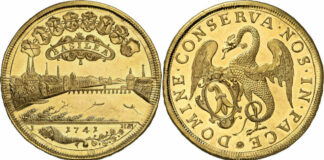Selected Rarities at Numismatica Genevensis
Anyone interested in truly top-class numismatics will have been following Numismatica Genevensis’ auctions for years. They are a pretty rare occurrence, but they always feature numerous coins preserved in the best possible condition. On 14 and 15 November, the time has finally come again. Across three auction catalogues, Numismatica Genevensis will be presenting a variety of coins and medals that are truly the stuff of any coin collector’s dreams. Auction 16 will offer numismatic highlights from around the world, many of which are the best-known specimens of their type. Auction 17 will include the collection of a “distinguished gentleman”, with large series from Belgium and Italy. Auction 18 is dedicated to Part 2 of the Geneva Collection, the first part of which was auctioned with great success in November 2021.
Auction 16: Perfect Rarities from Around the World – Ancient Coins
It is almost impossible to know which pieces to present in this preview, because the selection offered by Numismatica Genevensis is just so exceptional; pieces that would be considered a major highlight in other auctions can’t even get a mention here.
Let’s begin with a unique drachm from Aetna, a city name that will already be sending connoisseurs into raptures. It was founded by the Syracusan tyrant Hiero, who commissioned the best die cutters of their generation to design the city’s coins. As a result, the “coin of all coins” was created for Aetna: a unique tetradrachm produced by the Aetna master, which is now kept in Brussels. It was also a master who designed the seated Zeus on the drachm presented in this Numismatica Genevensis auction, first published in 1961. We don’t know his name, unlike the names of the Syracusan die engravers active in the era of the signing artists.
During this period, this city was home to the most famous die engraver of all time: the great Kimon. He created two iconic coin designs that have shaped our concept of aesthetics: the front-facing portrait of Arethusa and the image of Arethusa facing left, her curly hair gathered into a hairnet fastened above her forehead with a wide band. This most famous interpretation of the fountain nymph combines the portrait-like features of a real woman with the detached abstraction of the divine. Numismatica Genevensis is proud to offer two decadrachms from this ground-breaking series made from two different dies. Both pieces are the best-preserved specimens of their type; their provenance dates back to 1940 and 1941 respectively.
Let’s wrap up our preview of ancient coins with two pieces that would be a highlight even in any of the world’s most important collections. One is an archaic tetradrachm from the city of Athens, of unusual but highly appealing style. The other is an aureus featuring impressive portraits of Julia Domna and Caracalla, the provenance of which can be traced back to before 1910. Around that time, the collection of this coin’s owner, the Vicomte de Sartiges, was published by Parisian photographer and numismatist D. A. Longuet.
Auction 16: Perfect Rarities from Around the World – Islamic Coins
Numismatica Genevensis is known for offering great rarities of Islamic coinage on a regular basis, and auction 16 is no different. Among the pieces on offer is an Islamic imitation of a solidus of Phocas, made between the years 679 and 692, a complete collection of all 56 dinars of the Umayyads made between 696 and 750, and some extremely rare mohurs of Jahangir, ruler of the Mughal Empire.
Auction 16: Perfect Rarities From Around the World – World Coins and Medals
And that brings us to the world coins and medals; this catalogue includes many special collections, as well as numerous significant individual pieces and series.
There’s an extensive series of over 70 lots with patterns of Albanian coins from the early 20th century, followed by one of the real highlights of the auction: seven gold off-metal strikes of the famous Bavarian “Geschichtstaler”, which were produced for the prominent collector Philipp de Ferrary (1850-1917). Ferrary was regarded by his contemporaries as one of the wealthiest men in the world who, once he’d set his sights on a coin or a stamp, would pay any price for it without bargaining. At his request, the state mints were happy to produce circulation coins with years of issue that would otherwise never have been minted. Ferrary also commissioned gold off-metal strikes of the most beautiful coins of the 19th century; after all, the official dies for these coins were still stored at the mints. These include the gold off-metal strikes of the Bavarian “Geschichtstaler” offered by Numismatica Genevensis; these coins are of very special numismatic interest because they are the first ever commemorative coins, in the modern sense of the term. A later owner of this ensemble was one of the truly great collectors: King Farouk of Egypt.
Once again, there’s a vast wealth of impressive material; with so many lots to choose from, it’s rather difficult to pick out just a few to present here. Perhaps the 20 ducat piece of Sigismund Francis, Archduke of Further Austria and Tyrol? Or the medieval Cadière d’or of Anne de Bretagne? What about an “Una and the Lion”, graded NGC PF63 CAMEO (Top Pop)? Or one of the great rarities of the Kingdom of Italy: the 50 lire piece produced in Turin in 1864 in a mintage of just 103, only a dozen of which have been preserved – Numismatica Genevensis will be offering two specimens from this rare issue! Or perhaps you’d be more interested in a rare medieval piece of utmost historical significance, such as the tremissis of Charlemagne from Lucca, which depicts a bust of Charlemagne – though admittedly a rather crude one. After all, this would be the earliest “coin portrait” of Charlemagne. Or perhaps you collect Portuguese pieces? There’s also a unique, undated escudo of Alfonso V from the Huntington Collection.
We’ll finish with one of the most beautiful Swiss coins ever made: a 20 ducat piece from Basel featuring a detailed cityscape, minted with the dies of a taler from 1741.
And if all these pieces are out of your budget, it’s still worth having a flick through the catalogue! It also features many perfect coins with lower estimates, including an extensive collection of US gold, namely 30 lots of 5 dollar coins and more than 40 lots of 20 dollar coins.
Auction 17: The Collection of a “Distinguished Gentleman”
And that brings us to the collection of a “distinguished gentleman”. It comprises 630 lots and – as we’ve come to expect from Numismatica Genevensis – it is set apart by the perfect condition of all the pieces on offer. Although there are, of course, many lots in this collection with estimates in the five-figure range, there are also many in the three- and four-figure range that would enrich any collection, including some great rarities. So it’s worth studying the catalogue very carefully!
The “Collection of a distinguished Gentleman” is a classic collection of coins and medals from all over the world and all periods, spanning from antiquity to the modern era. But of course, the collector had certain areas of focus. One of them is the Kingdom of Belgium. More than 50 lots in the auction contain Belgian coins, including many patterns and some of the rarest Belgian coins we know of. The collector succeeded in acquiring all the 1 franc pieces of 1917 and 1918, with French and Flemish inscriptions respectively. Although the entire issue was melted down, these four pieces were preserved at the in-house museum of the Birmingham Mint, which was responsible for minting them.
With more than 370 lots, Italy is definitely the focus of the collection. And within Italy, the collector concentrated on the Kingdom of Italy and the Papal States.
As we take a look at the royal rarities, let’s begin, not with a gold coin (for once!), but with a small 10 centesimi piece from 1867, minted in Brussels. This is probably one of the rarest fractions of the Kingdom of Italy, if not the rarest. To date, only three specimens are known for certain, although Sergio Cudazzo, author of MIR, mentioned six surviving specimens.
Of course, there are also plenty of rare gold and silver coins from the Kingdom of Italy. Here are a couple of examples: a 20 lire piece from 1902, with a small anchor as a mint mark, from the Comte Giovanni Carotti di Falconara Collection, as well as one of the greatest rarities of the 20th century: a 5 lire coin from 1901, only 114 pieces of which were minted.
113 lots come from the Papal States. We’ll also take this opportunity to mention one of the great rarities of Papal numismatics: a ducaton from 1527. It was minted to pay the ransom for Pope Julius II, who was being held captive by German “Landknecht” mercenaries at Castel Sant’Angelo. According to the story, the Medici Pope was even forced to have his tiara melted down so that the precious metal could be sent to the mint and used to produce the 400,000 ducats needed.
If you’re a fan of 19th-century medal art, you should take a close look at the Papal States series; it features some wonderful works of art – both as individual pieces and in lots. The architectural depictions in particular are in a league of their own.
Auction 18: Geneva Collection: Part 2
The last of the three auctions is dedicated to the impressive collection of Genevan coins, the first part of which was auctioned by Numismatica Genevensis last November. And now, in auction 18 on 15 November 2022, the second part will be presented, consisting of the coins of the Republic of Geneva, i.e. the coins produced between 1535 and 1792.
This is a genuine collection whose collector attached great importance to completeness. That’s why it contains both commonly found pieces, with estimates starting in the lower two-figure range, and great rarities, which we’ll be presenting in this preview.
Let’s start with the only known specimen of a triple sol from 1594, a gold off-metal strike weighing 2 ecu pistolets with superb provenance. Even more exciting is the quadruple taler from 1598; this coin is probably the most impressive piece in Geneva’s entire monetary history and the only Genevan quadruple taler in private ownership. No wonder it featured in some of the most famous collections ever compiled, for example, the Bachofen and Virgil Brand Collections. This auction will also feature the first gold coin produced by the Geneva Mint after it was reopened and the rarest denomination of Genevan coinage of the 17th century: an ecu pistolet from 1638. The double ducat from 1665 is also the only specimen of its type in private ownership. We’ll finish this preview with a 10 1/2 sols piece from 1714 and a triple pistole from 1771.
All lots of the catalog can be found online.
For further information about the auction house, visit the website of Numismatica Genevensis S.A.




